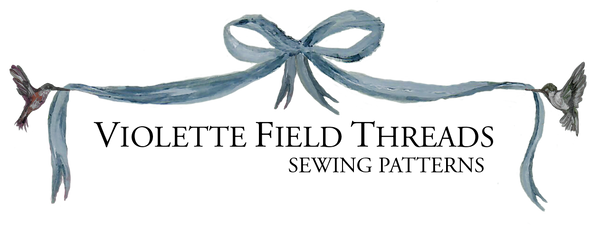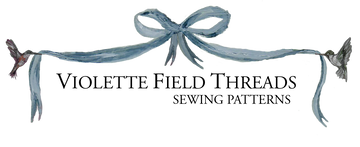2019~Tips & Tricks Recap! {A-H}

Hey Friends!! Can you believe 2019 is coming to a close soon?! I guess what they say is true - "Time flies when you're having fun!" We've had so much fun this year and thought a great way to wrap up 2019 would be to recap some of our favorite tips and tricks we shared in our newsletters throughout the year!
Back in January we started a series in the newsletter called “Tips and Tricks from A-Z.” We told you about a unique tip, trick, or reminder each week for each letter of the alphabet. We thought it would be fun to do a blog post about it with a quick recap of each tip. Since there are 26 letters in the alphabet, we decided to break the blog post into three sections, so it's not too much to read through at once...so here's our A-H recap!
 A is for Aurifil! The reason we always recommend Aurifil thread in our patterns is both the quality and the color. Aurifil has several types of threads. We recommend 40wt for sewing and Aurifil's 6-strand 100% cotton floss for embroidery.
A is for Aurifil! The reason we always recommend Aurifil thread in our patterns is both the quality and the color. Aurifil has several types of threads. We recommend 40wt for sewing and Aurifil's 6-strand 100% cotton floss for embroidery.

Aurifil's 100% Cotton 40wt thread is available in 270 cotton colors and is wound on a green spool. Because of its slightly thicker weight, it is perfect for use with sewing bags, toys, dolls or garments. It comes on a small spool which contains 164 yards, a large spool containing 1094 yards, and a cone containing 5140 yards.

Aurifil's 6-strand cotton floss is wound on a gorgeous wooden spool, perfect for easy travel and the prevention of pesky tangles! It is also available in 270 colors and boasts 18 yards per spool.
You only have to use it once to see the difference and why we recommend it!
 B is for ball point needles! Ball point needles are needles with slightly rounded tips. They are designed to part the fibers of the knit fabric rather than pierce them to prevent damaging the fabric.
B is for ball point needles! Ball point needles are needles with slightly rounded tips. They are designed to part the fibers of the knit fabric rather than pierce them to prevent damaging the fabric.

When you are sewing a woven fabric, you want a needle with a sharper point so that it will go through the fabric without snagging it. However, if you used that same needle when sewing knits it would poke a hole in your fabric that usually tends to grow with wash and wear. Using a ball point needle or a stretch needle will prevent this from happening. It is one of the most important things you need when sewing knits!


C is for clear elastic! Clear elastic is great when you are sewing with knits. It prevents necklines, shoulders, and bodices from stretching out and looking wavy or wonky once sewn.

If can be a little difficult to handle, so if you find that it is sticking to your presser foot while you sew, you may want to use a special Teflon-coated sewing foot. When sewing the elastic onto the fabric, you should sew without stretching the elastic. Also, we recommend cutting the elastic a bit longer than necessary for easy handling as you sew. Clear elastic is a game changer when attaching a knit bodice to a woven skirt!


D is for the Darby Cloche Hat Pattern! Our tip from this week is more of reminder of one of our lesser known but very cute and functional patterns = the Darby Cloche Hat.

The Darby Cloche Hat is one stylish accessory to add to your daughter's wardrobe, or even your own, as this pattern is sized toddler - adult! Darby features a 1920's styling with a low asymmetrical brim. Add a bow or felt flower for endless options. This stylish and classic cloche hat is easy and fast to sew and requires very little fabric!

 E is for Embroidery! Embroidery is decorative stitches used to create a pattern on fabric.
E is for Embroidery! Embroidery is decorative stitches used to create a pattern on fabric.

If you have ever seen some of the beautiful hand embroidery that a lot of our group members use on their garments, but don't know where to start, there is a great video on the Violette Field Threads Gathering place page that will show you how to make embroidered roses. (If you aren't yet a member, we suggest you join the group and check it out!) Hand embroidery is a great way to take your sewing to the next level and such a fun & relaxing skill to learn!

F is for French Seams! For those of you who do not have a serger, French seams are a beautiful way to hide those pesky inside, unfinished seams. Once you try french seams, you may even prefer to finish this way, even if you do have a serger. A french seam is a seam finish that encloses the raw edge so the reverse side is neat & finished.

Here is the process for creating a French seam. Pin your fabric together so that the wrong sides are facing each other. Sew the fabric together using a 1/4 inch seam allowance, removing the pins as you go. Trim the outside edge of the seam so you are left with 1/8 inch seam allowance. Open the pieces of fabric and lay it out flat on an ironing board. Iron across the seam on both the right side and the wrong side of the fabric so it lays perfectly flat. Then, fold the fabric so that the right sides are facing each other. Sew your second seam, this time using a 1/4 inch seam allowance. Iron the completed double seam one more time and there you have it - French Seams!!!


G is for grainlines! The grainlines are the direction in which the threads are woven. The straightgrain (lengthwise grain or warp) runs parallel to the selvedge and is the strongest. The crosswise grain (weft) runs perpendicular to the selvedge and has the weaker weave. This is important if there is going to be a lot of stress on the garment, you would want your stronger yarns to be where the stress of the garment is. It isn't particularly important for most of our garments, that is why people usually say you can cut it in either direction, as long as you are cutting straight. If you happen to cut off grain, it will cause our garment to be skewed or twisted.

You can also cut fabrics on the bias, which is at a 45 degree angle between the warp and weft. Cutting on the bias gives you maximum amount of stretch in woven fabrics. It is often used as binding around curves. The most important thing to note, is to be careful to cut on the grainline, be it the warp or weft. 

H is for Hong Kong seams! Hong Kong seams are another neat way to finish your seams. They are similar to French Seams, as the raw edges are encased. However, instead of encasing them within themselves, they are bound either to one side or in the case of thicker fabrics, you can press the seam allowances open and bind each side separately.

Any of our pants patterns, such as Sloane Skinnies, Avery Pants & Presley pants would be a great place to try this method!!

We hope you enjoyed the first part of our {A-Z } recap! Come back to read next weeks blog post where we will recap tips {I-Q}!

Happy Sewing!!

